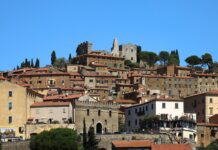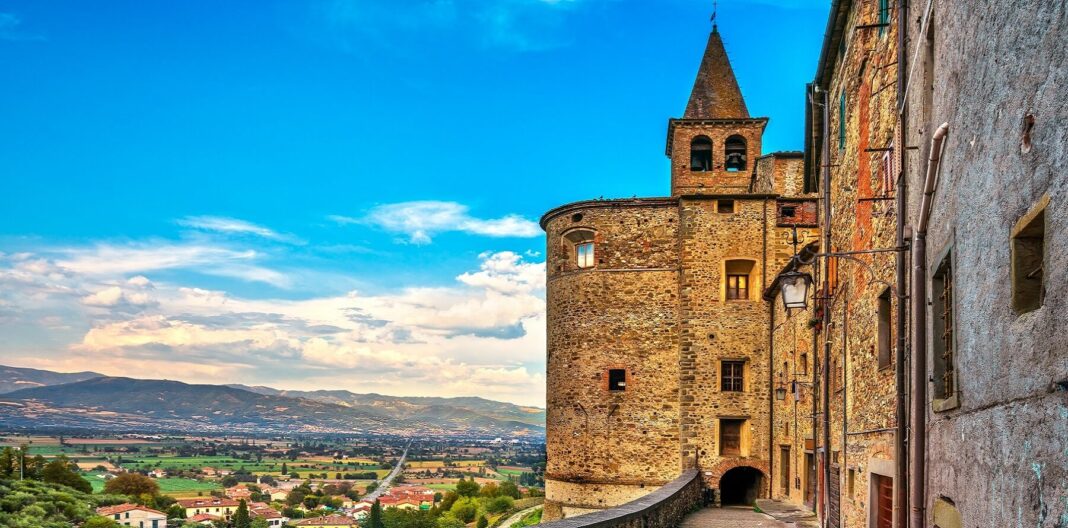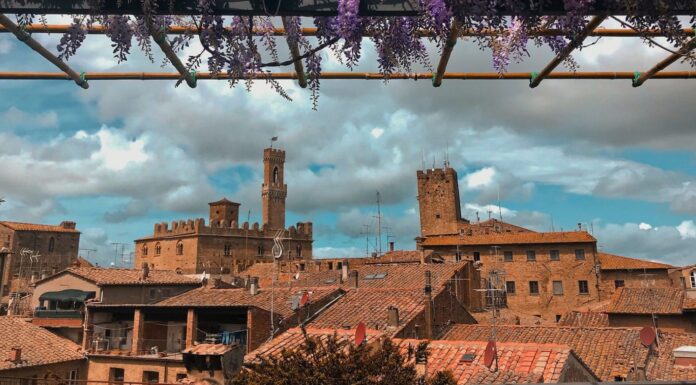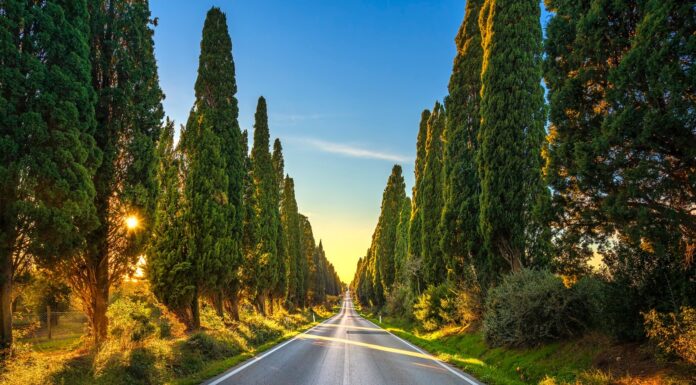The quaint town of Anghiari, nestled among the Tuscan hills, is often overlooked by tourists in Italy. Approximately 5,000 people make up this village, so it’s not a large city destination. The question remains: is it worth visiting?
Anghiari is a wonderful town to visit while you’re exploring Tuscany. It offers breathtaking views of the countryside and tasty Tuscan cuisine. The town’s rich history is intertwined with medieval architecture and ideas, war, and Renaissance art. Plus, its location is quite convenient for visitors exploring nearby major cities in Italy.
There’s plenty more to learn about Anghiari before you head there, though. From location to accommodation to transportation to history, knowing more about the town will help ensure a perfect stay.
Where is Anghiari, in Italy?
Located in the Arezzo province in eastern Tuscany, this stone city sits atop a hill. It’s only 5 km away from the border of the Umbria region.
The closest large city to Anghiari is Arezzo, which is only 27 km away. It’s also near the historical town of Cortona, which is located roughly 48 km away. Florence, one of the most visited cities in Italy, is just over 100 km from Anghiari.
What are the 4 Best Main Attractions in Anghiari?
Anghiari has much to offer, but some attractions are must-dos for visitors.
1. Chiesa di Santo Stefano
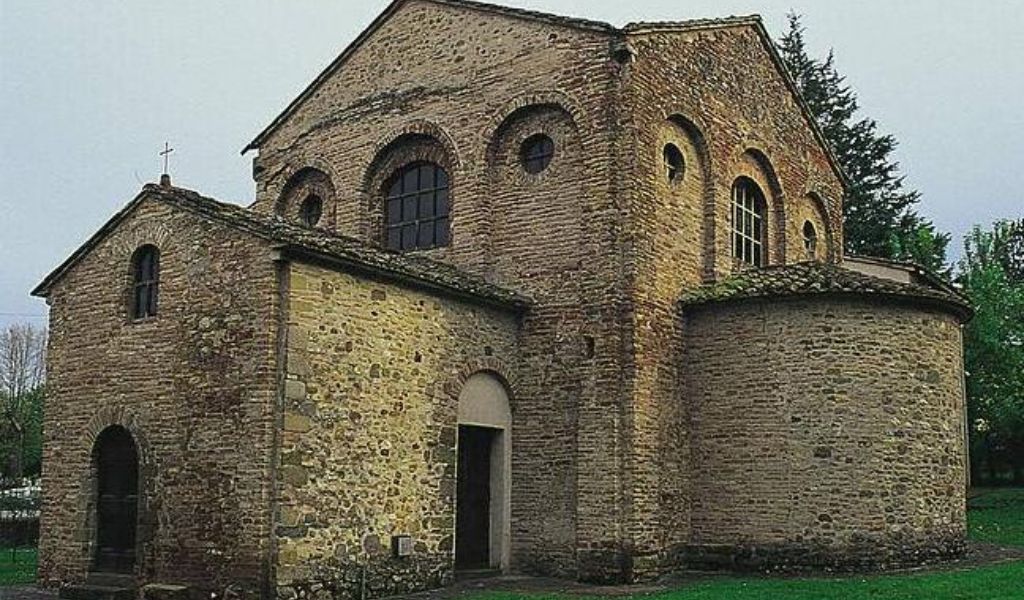
This Catholic church is a prime example of early medieval architecture. It’s located outside the city walls, but it still holds great importance and beauty. Inside is a painted panel from the 15th century, which portrays a representation of Mary with her child Jesus.
Painted by Domenico di Michelino, the painting was impacted by a flood in 1966. But, the church is still worth the visit for its characteristics dating back to the early medieval period as well as its Roman-like columns inside.
Read more: Cathedrals in Italy – Exploring Italy’s Historic Treasures
2. Museo della Battaglia e di Anghiari
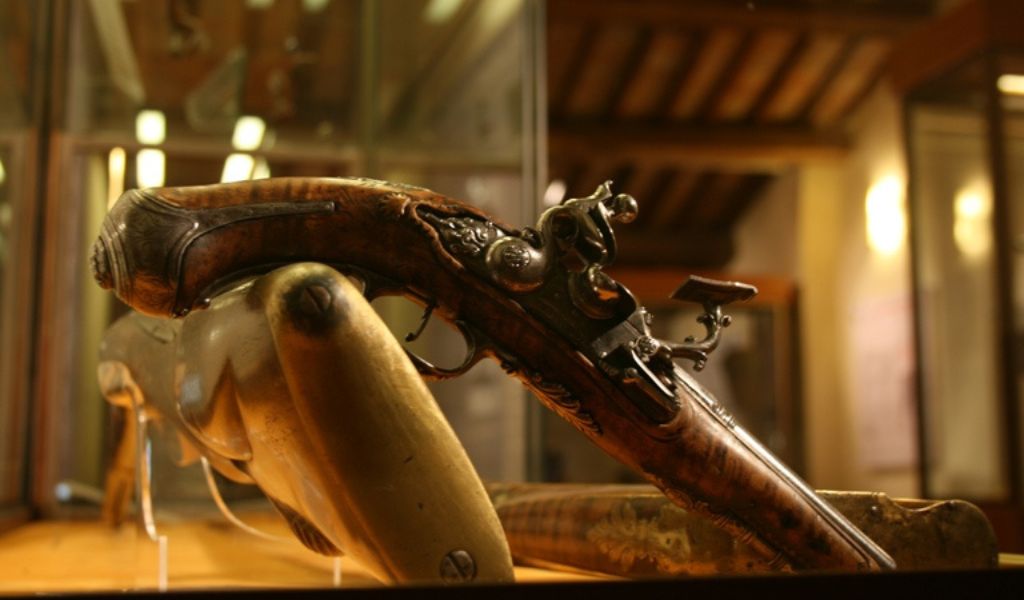
The Museo della Battaglia e di Anghiari focuses on the city’s general history, as well as its famous battle. You can check out the many exhibits that help explain Anghiari’s rich past, including references to Da Vinci’s failed artwork.
Beyond visiting the museum’s indoor exhibitions, you can also sign up for an experience exploring the sites of the famous battle. Starting from the museum, you’ll retrace the steps of Italian troops who fought.
3. Palazzo Taglieschi
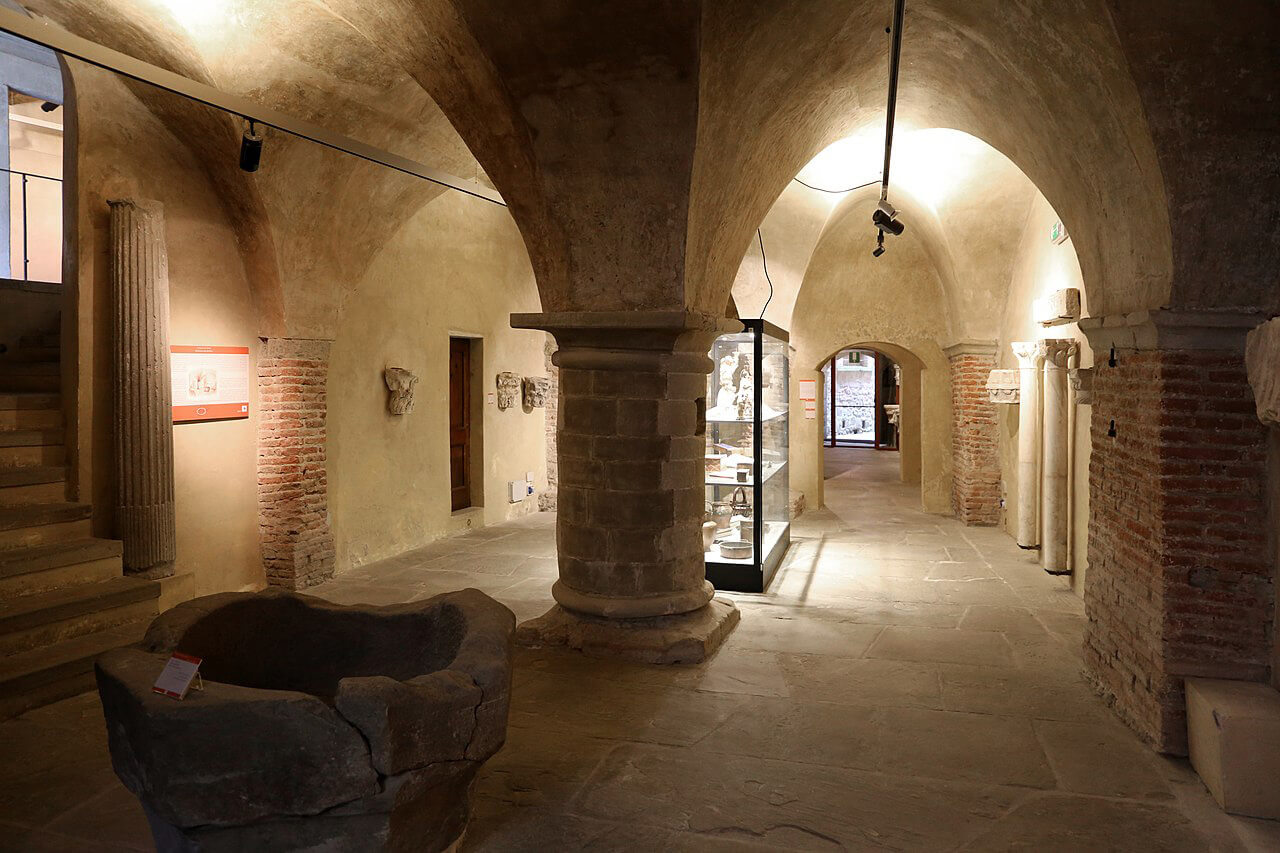
This Renaissance building, yet another Renaissance treasure of Anghiari, houses a museum and offers opportunities to learn about the town’s art history. Its name is derived from one of the most powerful families in the city, the Taglieschi family.
Palazzo Taglieschi holds works from the 14th to the 18th century, including a nativity scene and objects used in folk traditions. The most well-known part of the collection is Jacopo della Quercia’s Madonna, a wooden polychrome statue of the Virgin Mary.
4. Castello di Montauto
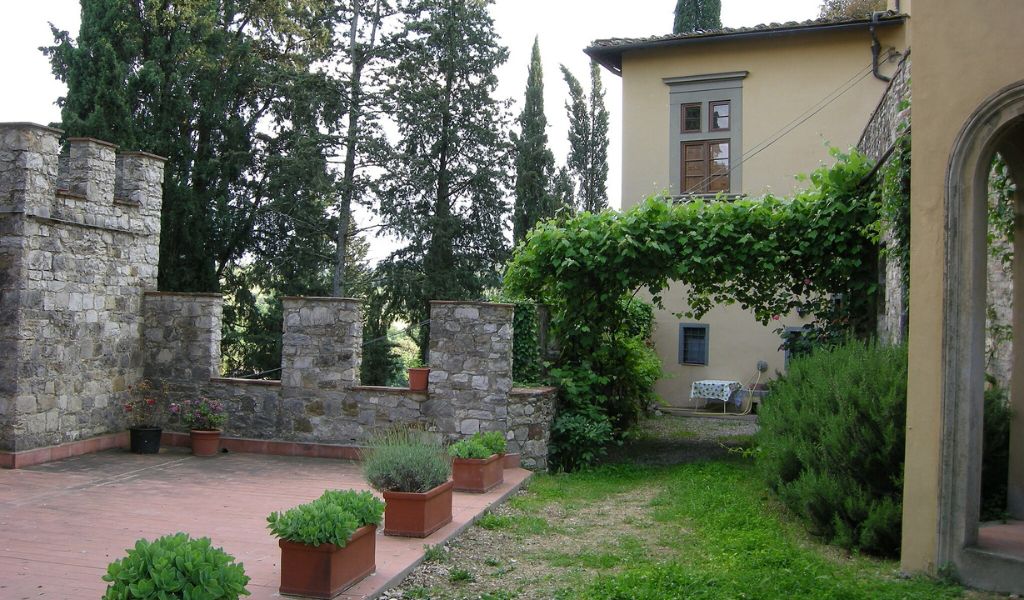
Today, Anghiari highlights testimonies of its medieval history, and Castello di Montauto is no exception. Built between 1180 and 1190 on a hill, it measures in at 786 meters tall. The castle has been renovated over the years, but it did suffer some damage from World War II bombings.
Despite this, the Anghiari treasure is still charming and open to visitors. Just make sure that you book your visit at least a week in advance.
Explore more: Poppi – A Spectacular Castle Town in Tuscany
Attractions not to be Missed near Anghiari
Besides the attractions in the center of Anghiari, there are many things to see nearby. If you’re in the area, check out these ideas!
Castello di Galbino
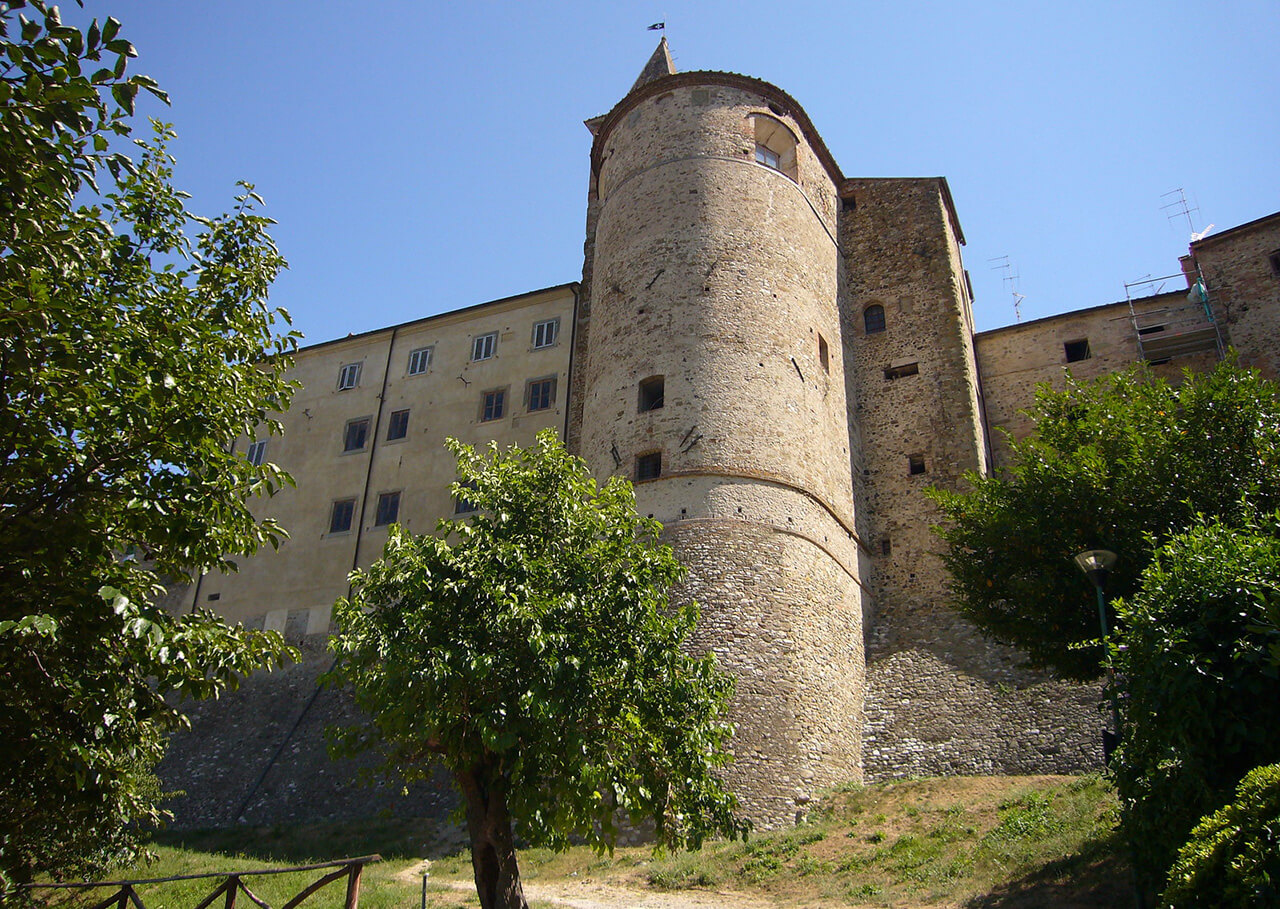
Galbino Castle, or Castello di Galbino in Italian, is a short 7-minute drive from Anghiari’s center. The historic building dates back to around the 11th century and sits on the bank of a tributary stream that feeds into the Tiber River.
The castle’s structure features one central tower, plus four smaller towers in the shape of cylinders. The dark brown doors and wooden window shutters offer a stark contrast to the light beige stone walls and lush green surroundings. It certainly looks unique, making it a fantastic attraction to visit.
Castello di Sorci
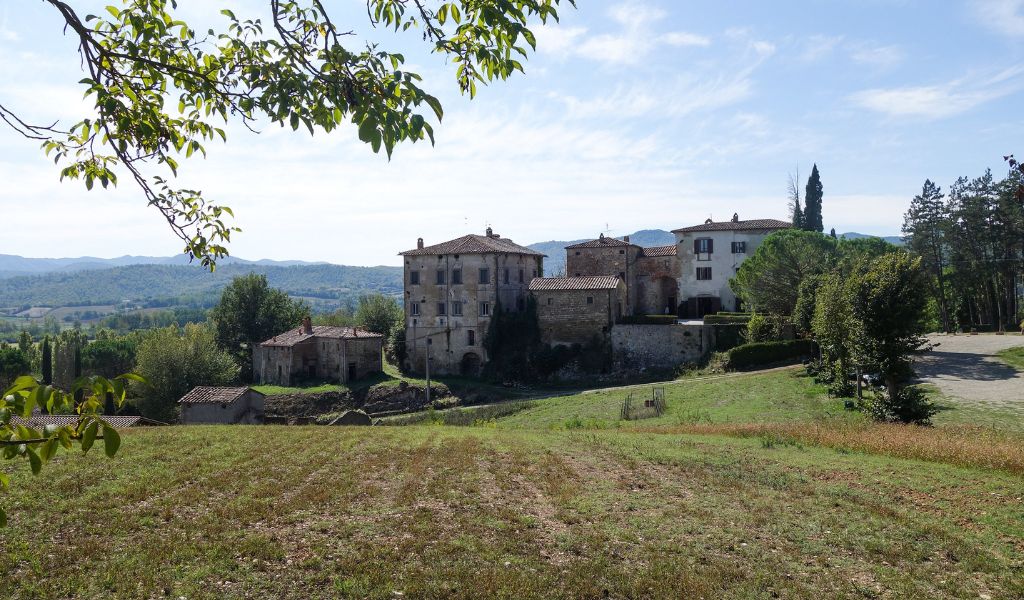
Sorci Castle is even closer to Anghiari than Galbino Castle. It’s only a 5-minute drive (or 45-minute walk) away from the village.
Castello di Sorci is a lovely place to spend the day, but keep in mind that it’s primarily a place to stay overnight. There are room options for traditional or more modern rooms. Either way, you’ll check out traditional period furnishings and be surrounded by oak forests and vibrant fields.
Additionally, it features a restaurant, which offers the traditional tastes of Tuscany. Castello di Sorci is also commonly used as a wedding venue.
Explore more: 15 Castles in Tuscany – An Enchanting World of Timeless Beauty
Pieve di Santa Maria alla Sovara
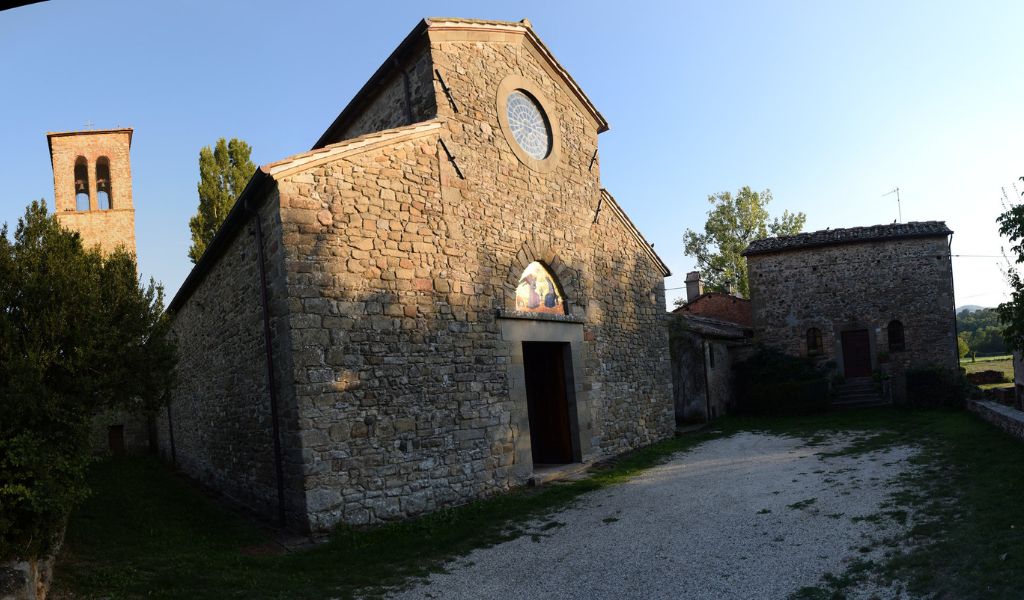
Pieve di Santa Maria alla Sovara is a parish church with records dating back to 1030. However, experts seem to think that it was constructed around the 9th or 10th century.
The church’s exterior maintains its original layout and pre-Romanesque architecture. Shortly after it was built, Pieve di Santa Maria alla Sovara was altered. Modifications included structural changes as well as the additional bell tower.
This pieve was also renovated during the 15th century. The interior was redesigned to follow Renaissance characteristics, which still remain today.
Many believe that the parish church was set on a Latin cross plan with a presbytery and a nave ending in three apses. According to them, this refers to the sacred principle of the Trinity.
Pieve di Santa Maria a Micciano
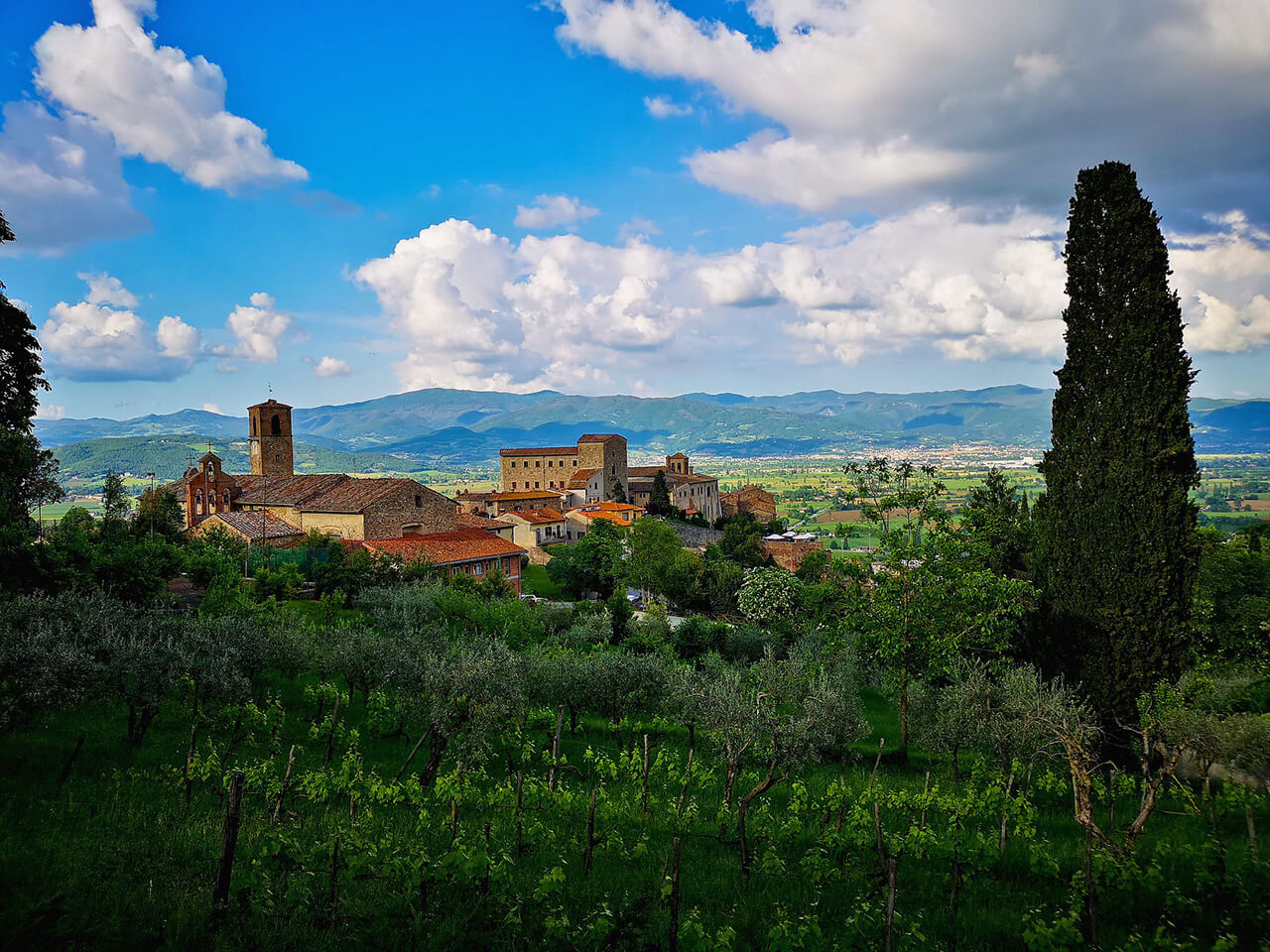
This last parish church is just a 6-minute drive (or 12-minute bus ride) from Anghiari. The sacred building, like Pieve di Santa a Sovara, has records dating back to the 11th century. Pieve di Santa a Micciano was modified several times throughout the 13th and 14th centuries, so it includes features from various periods.
If you are interested in checking out the church’s interior, it’s recommended to visit during mass since it’s sometimes closed to visitors.
Best Places to Stay in Anghiari
Anghiari isn’t a big city, but there are plenty of wonderful places to stay in and nearby the town. Here are some of the best accommodations:
Agriturismo La Scarpaia
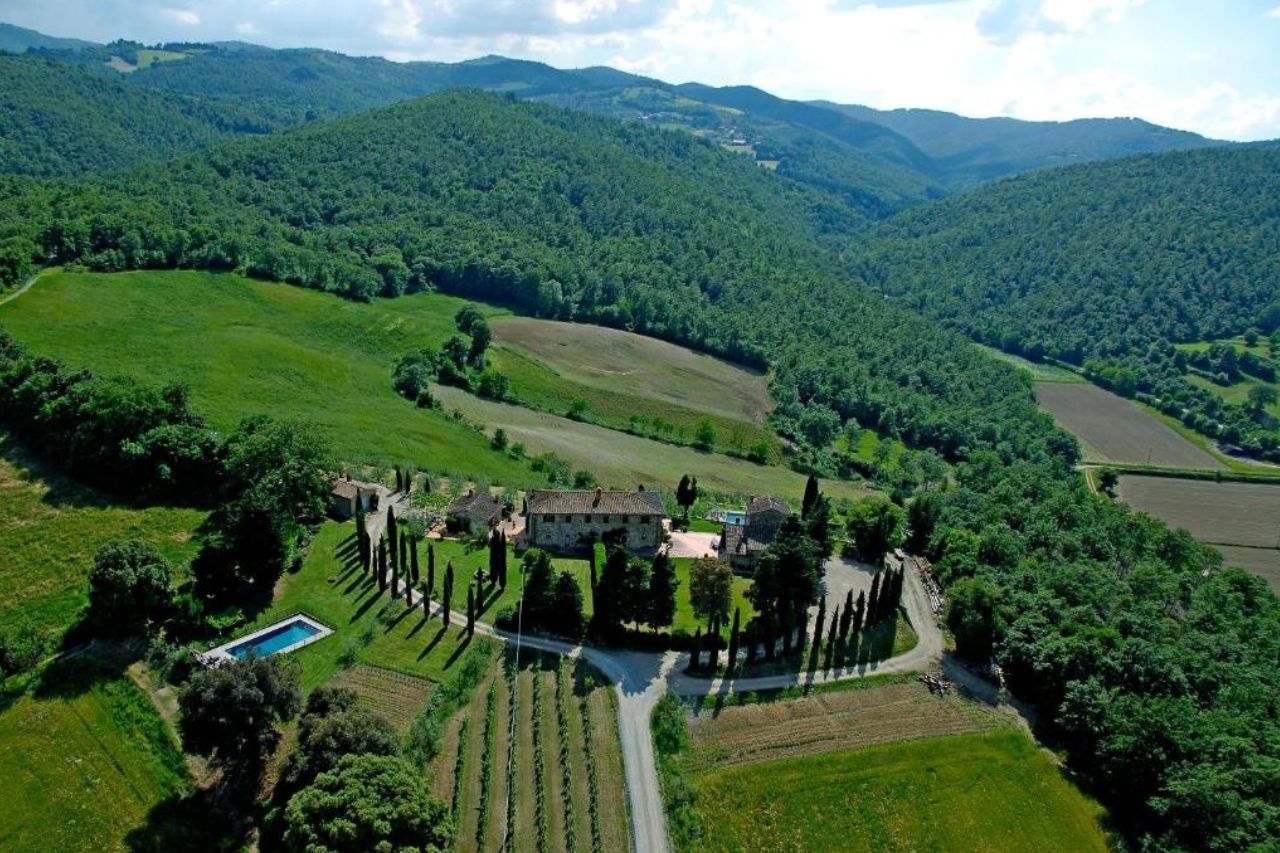
This charming agritourism, which features a stunning cyan pool and terracotta floors, is just a 5-minute drive away from Anghiari.
Locanda del Viandante B&B
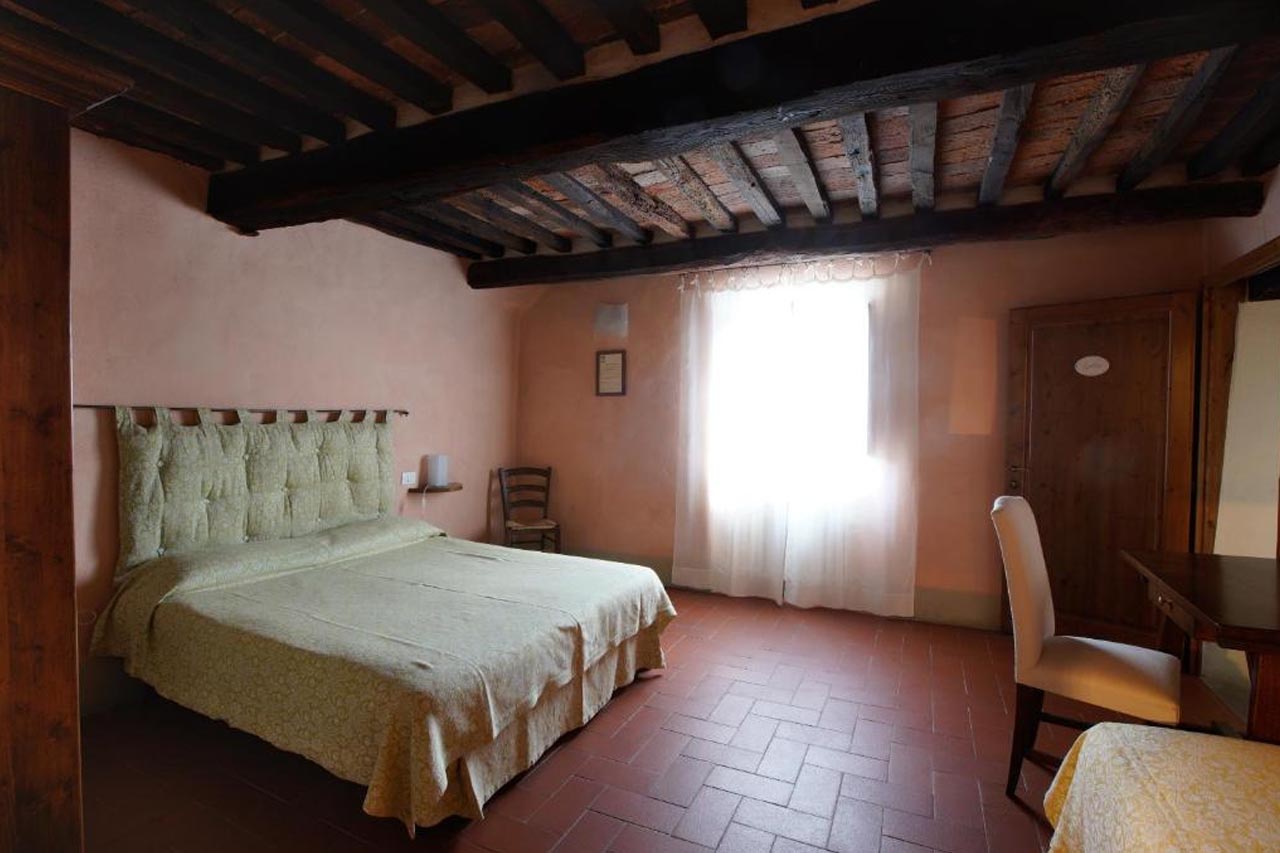
Located off the beaten path, this B&B offers daily Tuscan breakfasts and lovely views of the countryside.
Il Nido sulla Ruga

Here, you can stay right in the heart of Anghiari while enjoying rooftop views of the city.
How to Get to Anghiari
Anghiari is accessible by car and by public transportation, with airports 1.5-5 hours away.
If you’re getting to Anghiari from a larger city via public transportation, you’ll first need to take a train to Arezzo. From Arezzo Terminal, you can then take a bus that will get you to Anghiari in roughly 45 minutes.
You can also drive to Anghiari on your own if you rent or have access to a car. Take Via A1/E35 if you’re heading down from Florence or Bologna. Alternatively, if you’re coming from further south, you can take either Via A1/E35 or Via SS3bis. From Florence or Perugia, the drive is only about an hour and a half. Driving is a fantastic way to experience the Tuscan countryside if you have the chance!
The airport closest to Anghiari is the Perugia (PEG) airport, which is approximately 5 hours from Anghiari by public transport. Florence (FLR) is slightly farther away, but the journey by train and bus to Anghiari is much quicker at 3 hours.
No matter how you get to Anghiari, you’ll be greeted by authentic culture, delicious gastronomy, beautiful views, and fascinating history.
The Battle of Anghiari – Leonardo Da Vinci Painted It
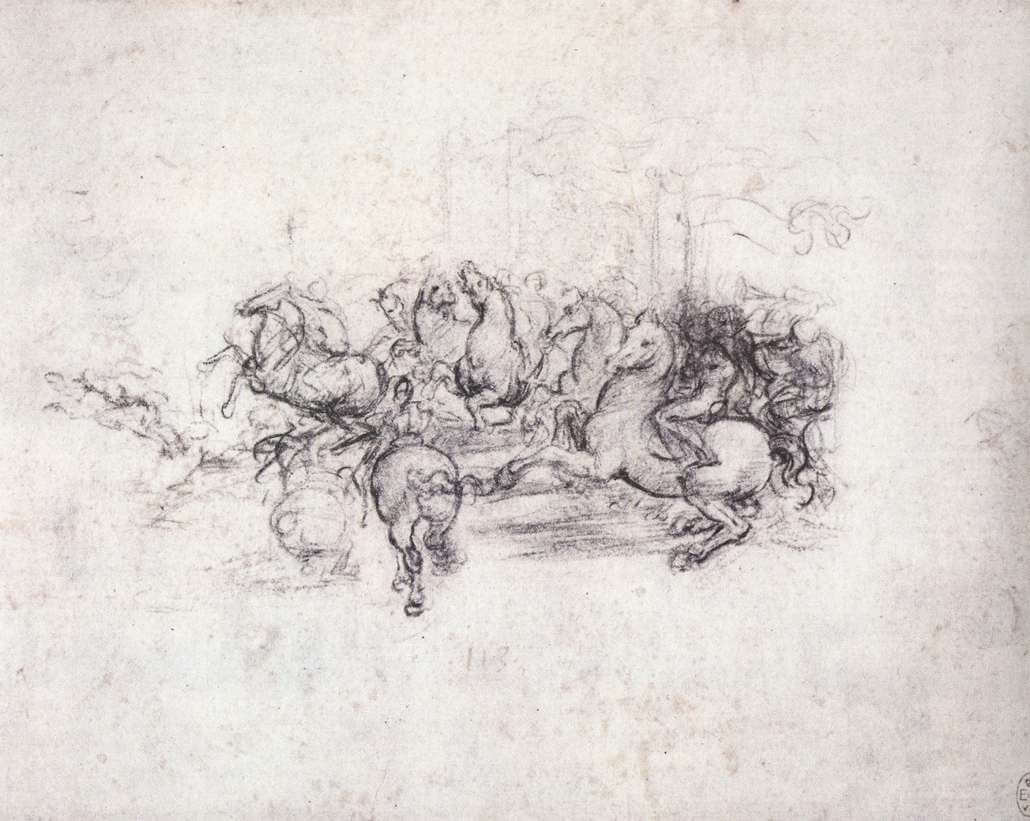
If you’re a history buff or are passionate about Renaissance art, Anghiari will be particularly fascinating. On June 29th, 1440, the Duchy of Milan and the Republic of Florence fought in the Battle of Anghiari. According to legend, only one soldier was killed during the day-long battle involving thousands of soldiers. Ultimately, the Florentines forced the Milanese, led by Niccolò Piccinino, to retreat.
What’s even more interesting is that the battle is well-known for Leonardo da Vinci’s failed painting attempt. The artist planned to paint a fresco in Palazzo Vecchio in Florence depicting men riding war horses during the battle.
However, Da Vinci never completed the work. Knowledge about his artistic plans comes from preparatory studies and drafts. A drawing by Peter Paul Rubens, who was supposedly inspired directly by Da Vinci’s sketches, currently hangs in the Louvre in Paris.
Is Anghiari a Recommended Place to Visit in Tuscany?
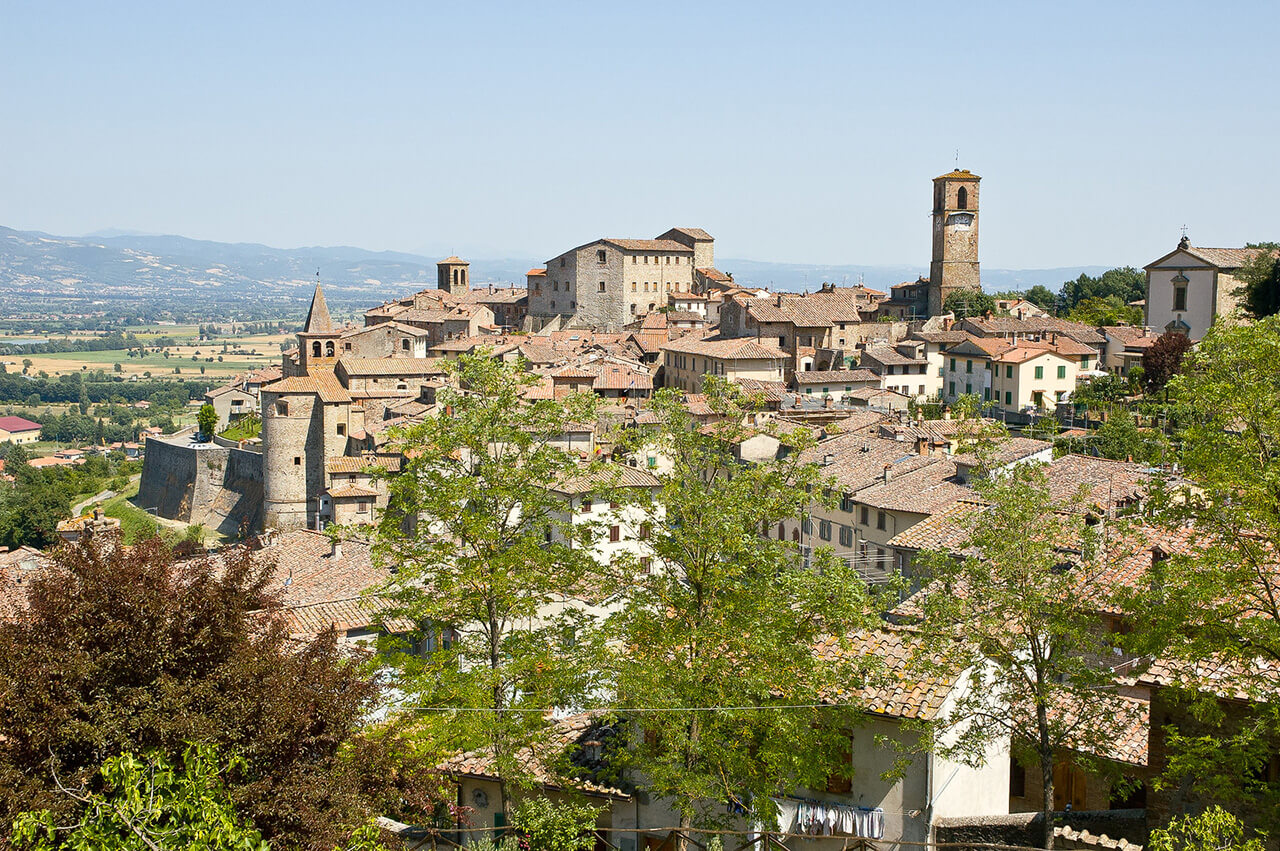
Anghiari is praised by Italians for being authentic and less touristy than other destinations. If you’re hoping to get a feel for genuine Tuscan life, this town is particularly ideal.
FAQs about Anghiari
Is it worth going to Anghiari?
Whether you’re drawn to its history, artistic community, or outdoor activities, a visit to Anghiari promises a positive and rewarding experience in the heart of Tuscany.
What is Anghiari known for?
Anghiari is primarily known for its historical significance, as it was the site of the Battle of Anghiari in 1440. The town is also known for its well-preserved medieval architecture, its cultural heritage, including art workshops and festivals, and its scenic beauty in the Tuscan countryside.
How old is Anghiari?
It is an ancient town with a history dating back over a thousand years. It was officially founded in the 11th century, making it more than a millennium old. Its historic center features medieval architecture and a rich cultural heritage, reflecting its long history.


